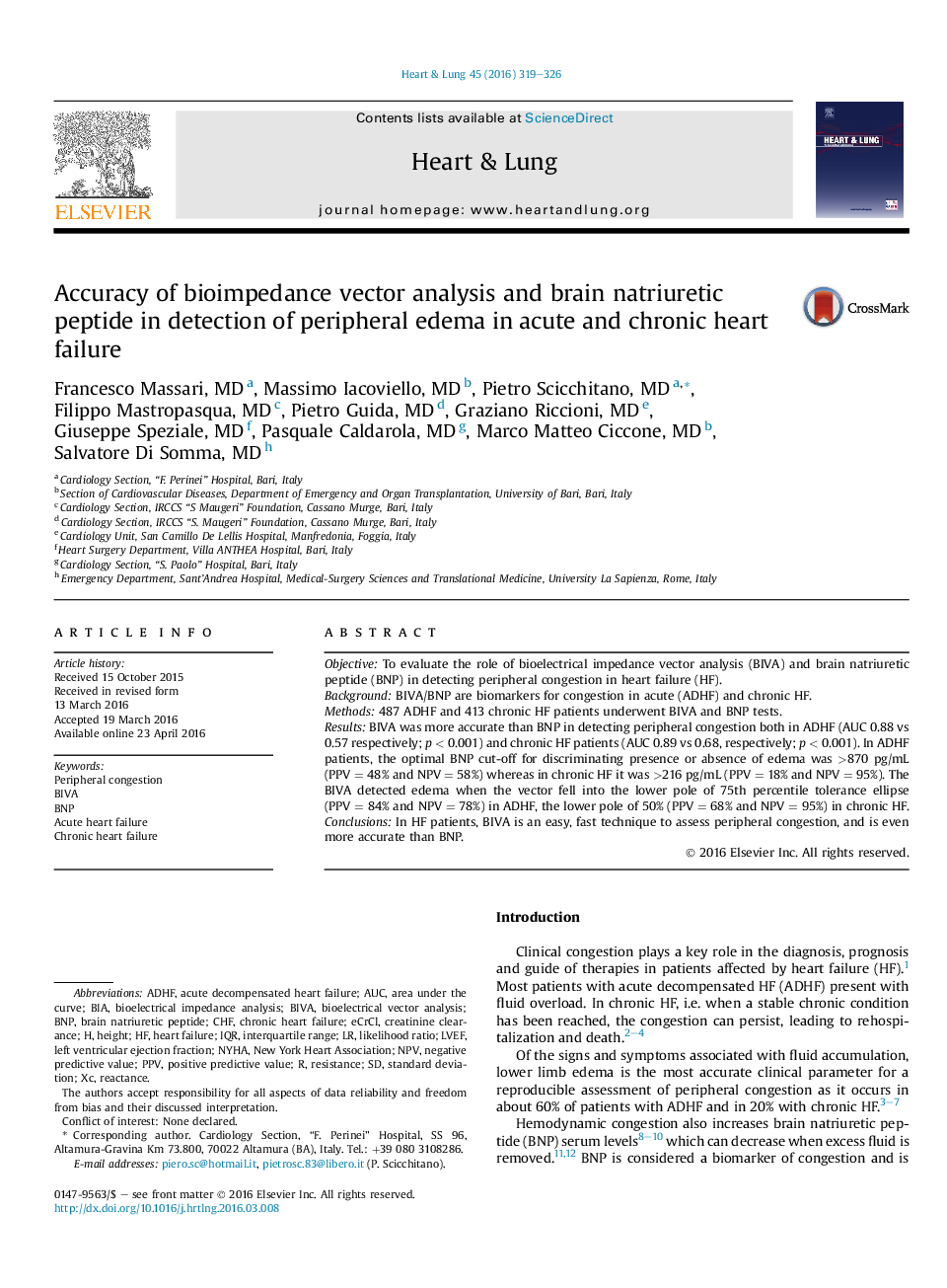| Article ID | Journal | Published Year | Pages | File Type |
|---|---|---|---|---|
| 2650979 | Heart & Lung: The Journal of Acute and Critical Care | 2016 | 8 Pages |
ObjectiveTo evaluate the role of bioelectrical impedance vector analysis (BIVA) and brain natriuretic peptide (BNP) in detecting peripheral congestion in heart failure (HF).BackgroundBIVA/BNP are biomarkers for congestion in acute (ADHF) and chronic HF.Methods487 ADHF and 413 chronic HF patients underwent BIVA and BNP tests.ResultsBIVA was more accurate than BNP in detecting peripheral congestion both in ADHF (AUC 0.88 vs 0.57 respectively; p < 0.001) and chronic HF patients (AUC 0.89 vs 0.68, respectively; p < 0.001). In ADHF patients, the optimal BNP cut-off for discriminating presence or absence of edema was >870 pg/mL (PPV = 48% and NPV = 58%) whereas in chronic HF it was >216 pg/mL (PPV = 18% and NPV = 95%). The BIVA detected edema when the vector fell into the lower pole of 75th percentile tolerance ellipse (PPV = 84% and NPV = 78%) in ADHF, the lower pole of 50% (PPV = 68% and NPV = 95%) in chronic HF.ConclusionsIn HF patients, BIVA is an easy, fast technique to assess peripheral congestion, and is even more accurate than BNP.
